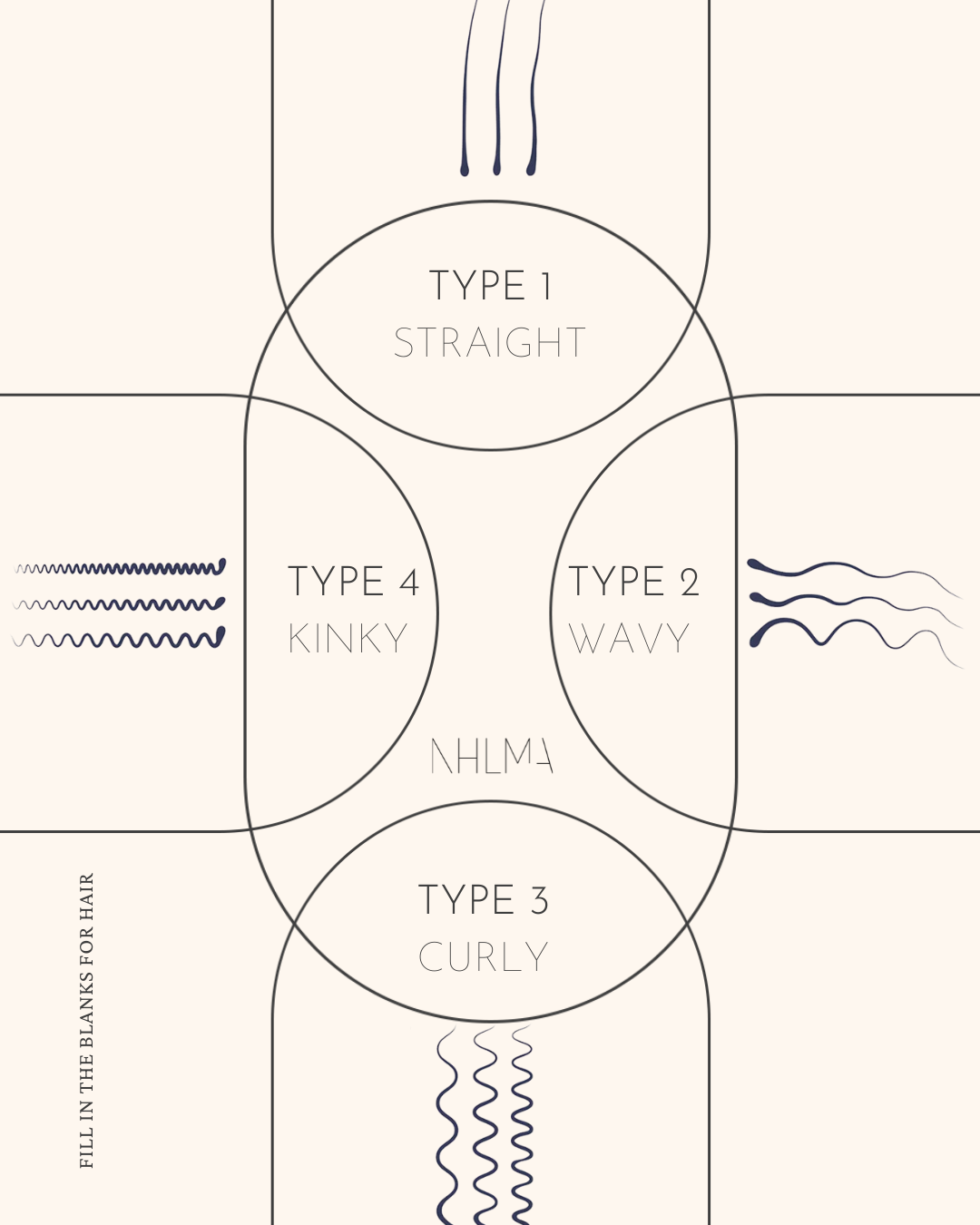What Is Your Hair Texture And Type?
Each person is born with a unique hair texture and type. Whether your hair is fine and straight, curly and thick, or anything in between, determining both your hair texture and type can help you to have your healthiest hair possible.
Why is determining your hair type and texture an important factor in optimizing hair health? Identifying your hair texture type unlocks information about the best ways to style and care for it, as well as repair damage and combat hair loss.
Texture & Type Defined
Hair texture describes the circumference of your hair, or the degree of each strand’s actual thickness. There are three different hair texture types—fine, medium and thick.
Hair type has a more broad spectrum, but is categorized by four main groups: straight, wavy, curly, and kinky/coiled. For each category, there are three subcategories, and the hair can have varying curl patterns and thicknesses.
Hair Types and Hair Loss
While no hair type is more or less prone to hair loss, curly and kinky/coiled hair is more prone to breakage and damage. Why? This can happen for multiple reasons, such as:
Dry Hair: The loops, grooves and curls of the hair strand can make it challenging for the oil to travel down the hair shaft, causing extreme dryness and breakage. Moisture Mask using a molecular approach to repair damaged and broken bonds in the hair shaft using 11 vital amino acids to assist severe dry hair and damaged hair.
Heat Styling Damage: When using tools such as blow-dryers, curling irons or straighteners, the high heat temporarily changes the structure and shape of the hair. Over time, this high heat will make the hair weaker and dehydrated, leaving it more prone to breakage.
Tight or Straining Hairstyles: Traction alopecia, a type of alopecia, and hair loss along the hairline can occur from braiding and/or tight hairstyles. In the case of hair extensions or cornrows, those without tension are less likely to irritate and pull at your scalp, weakening the follicle and causing hair loss. Care for weaves by feeding the hair and scalp and applying by using peptides in NHLMA Growth Factor and Derma-Roller. This combination stimulates blood flow and nourishment to the impacted areas. The inclusion of Peptides in NHLMA growth factors means the product can penetrate the outer layer of the skin, so instead of sitting on top of the skin, they sink in more deeply. Injection boosters can also be used to grow stubborn hairs such as PRP.
Unique Hair Demands Unique Treatment
Just as each head of hair has a different makeup of texture and type, so too does the treatment that optimizes its health need to be diverse and unique. Hair density tests conducted at NHLMA can determine exactly how much hair, or hair loss, are in certain areas of the scalp. See more than what the naked eye can see with microscopic views of the scalp, and adjust your treatments accordingly.
TRY:
Hair mask treatments: Treat damaged hair quickly and efficiently each week to address dryness. Look for professional grade strength and ingredients such as ceramides, oils, and amino acids.
Medical Grade Topical Treatments: Help ignite the dormant follicles to grow, and promote more hairs into the growing phase by applying regularly and topically to stubborn spots to accelerate growth
Complimentary Hair Check: A microscopic scalp evaluation is a simple, noninvasive, rapid and efficient technique for measuring hair follicle activity. See immediately your hair density and areas that are likely to be affected by hair loss.



